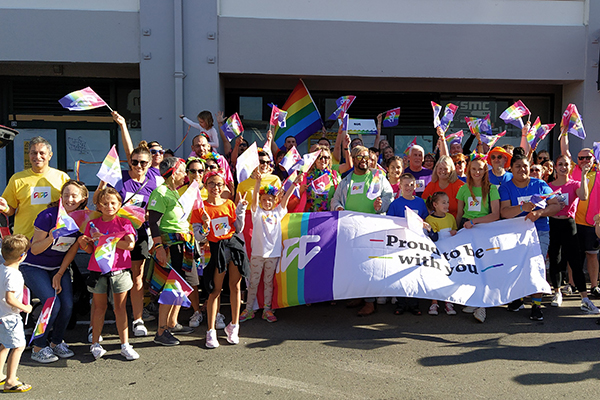Finalist
 Conversations that create space for employees to engage on important topics that help build connection and inclusion are a key part of the Accident Compensation Corporation (ACC) journey towards developing an inclusive workplace.
Conversations that create space for employees to engage on important topics that help build connection and inclusion are a key part of the Accident Compensation Corporation (ACC) journey towards developing an inclusive workplace.
ACC has offices all over the country with staff helping prevent injuries and get clients back to everyday life if they’ve had an accident.
The organisation’s leadership framework is built on four behaviours – inclusive, accountable, customer-focused and curious. The Chief Executive actively champions diversity and inclusion in regular communications with employees and has deliberately recruited a more diverse executive team.
In 2018 ACC started building leadership commitment to inclusion by holding workshops for leaders that aimed to build a strong understanding of the ideal workplace and the role of leadership in creating it.
Chief Talent Officer Sharon Champness says, “All ACC’s leaders held conversations with their teams on inclusion where teams celebrated diversity, discussed unintended bias and committed to increasing inclusion.”
Collaboration is an ongoing commitment as ACC intentionally builds a culture of inclusion.
“Teams create inclusion in many ways. Following our regular engagement surveys, teams discuss results and build a plan of what they want to improve together. Three times a year, we conduct a team conversation throughout ACC on a specific theme. These conversations create space for teams to engage on important topics that build connection and inclusion,” she says.
“In developing policies, designing offices, introducing initiatives and implementing new systems, we intentionally consider inclusion in our decision making. We reach out to our employee diversity networks to ensure that the voice of employees can be heard in design activities.”
There are six employee diversity networks and each has a sponsor from the executive team.
The networks have supported many initiatives including an accessibility toolkit, encouraging employees to include pronouns in their email signatures, the introduction of a Rainbow learning module, the introduction of parents’ room and quiet rooms, and learning sessions on mental wellbeing for leaders.
Other initiatives introduced to build a more inclusive workplace include a flexible dress approach. Employees were invited to reshape the organisation’s guidelines.

“Employees enthusiastically contributed with hundreds of responses. The reshaped guidelines allow employees to “dress for their day”, trusting employees to make the right decision depending on what their day involves. Cultural dress is specifically encouraged. Employees indicate that the guidelines better allow them to bring their whole selves to work,” says Sharon.
Additionally, ACC has recently announced that employees can choose to work from home for up to two days a week.
“While we continue to build an inclusive workforce, we know that there are groups in our workforce who are under-represented compared to our customers. We are actively addressing this by focusing on proactive recruitment of Māori and people with disabilities,” says Sharon.
The organisation remains future-focused, with a commitment to ongoing change.
“ACC is not perfect. Last year we conducted a workforce survey, specifically focused on understanding inclusion. Over 2000 responses were received. Nine per cent of people reported that they did not feel able to bring their whole selves to work. Responses indicated that most people practice inclusive behaviours, but this isn’t yet universal. We shared these results openly with our employees, celebrating the inclusion that most people experience and acknowledging our need to continue to improve.”





